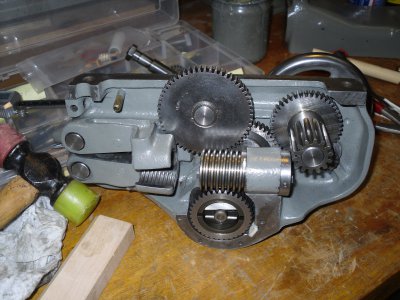- Joined
- Feb 19, 2014
- Messages
- 112
Hey all. I have a Soutbend 9A, quick question. Should the apron be full of oil like a sump? I always oil my lathe before use and the other day I saw that the apron had a drain plug so I figured I would get all the old junk out of there and I opened it and its dry? Im always dumping oil in the cups. So I was wondering if the clutch assembly is supposed to be sitting in like a sump of oil or it just gets oil from the cups as needed?


